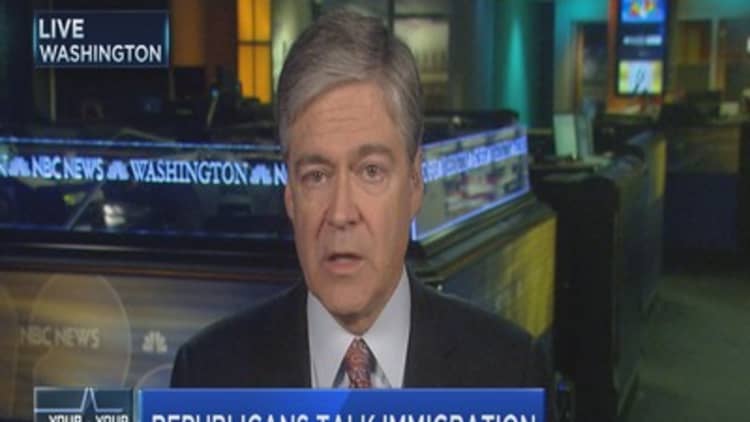It's very possible this presidential election will see over $10 billion spent. A huge portion of that will go into TV commercials.
Can we measure the effectiveness of these TV ads? Yes.
What's the biggest factor in moving the needle on potential voters? Emotions.
What about facts, the issues, a candidate's platform ... you know, the serious stuff? Not really, sorry.
That's the analysis from Copypop.com, an online platform that tests advertising among consumers. At the request of The Big Crunch, the company tested several ads from leading presidential candidates to see which ones had the most success in shifting voter opinion.
"We can explain 90 percent of the change in voting intention by people's emotional response alone," said Dan Goldstein, a co-founder of Copypop.
The three factors in measuring this are (1) how much people liked an ad, (2) what emotion they felt, and (3) how much they felt that emotion.
"It turns out there is only one thing that explains people's vote switching: how the advertising made them feel," said Goldstein.
The results showed something else interesting: If an ad was positive about a candidate, or negative about an opponent, the results were the same.
Here's what else didn't matter: learning something new or useful in an ad, if you agreed with the points being made, if you found the message relevant, if you even believed the candidate, or if you thought the candidate would be good for the country.
Now it's your turn. Watch these six ads, tell us what you think in the poll below, and at the bottom we'll show you how they fared with the people who were tested by Copypop.
Jeb Bush: I've Delivered
Donald Trump: Make America Great Again
Jeb Bush attacking Trump
Hillary Clinton: Family Strong
GOP attacking Hillary
Carly Fiorina: Faces
Now it's time for the poll:
Now that you've done that, here are the results.
The best ads within this group in terms of moving voter behavior were Bush's "The Real Donald Trump" and Clinton's "Family Strong," both of which moved 9 percent of independents to their cause. Here were the full results:
Copypop tested ads on different groups of Democrats, Republicans, Independents and the general population as a whole. Each group was exposed to one ad only, and asked both before and after viewing the ad who they would vote for. The shift in voting intention is the effect of the advertising.
Copypop has a method of very fast and cheap advertising testing, the type of approach used by major consumer brands — think burger chains and department stores, for example.
There you have it. Next time you see a campaign ad, notice if it registers emotionally at all, and does it perhaps change who you might vote for. And now it's clearer why billions of dollars will be spent on ads — negative and positive, to buy your vote. And if it takes some strong emotions to do it, then why bother with the truth?
"It is possible to advertise your way to the White House," said Goldstein. "Winning votes is easier than you might think, but not all the candidates get it or are capable of delivering it."


